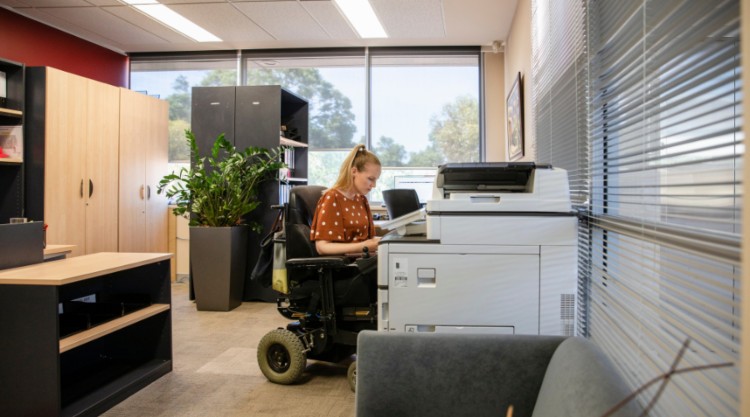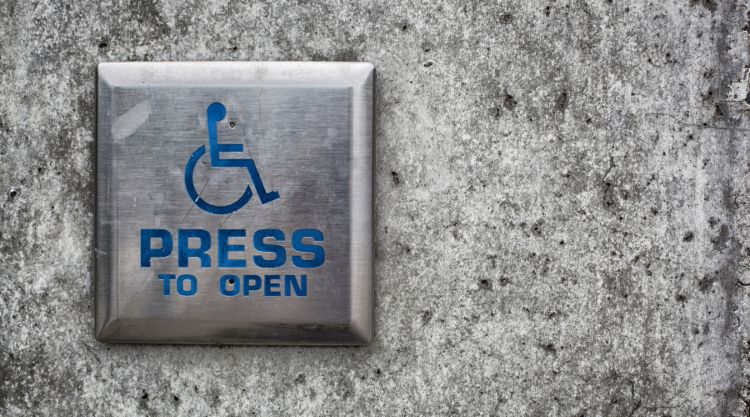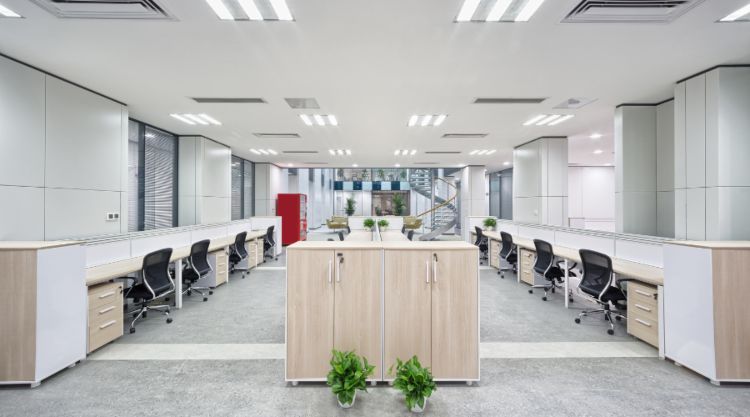Making your workplace more accessible is a worthy goal that all employers should continuously strive for. Improving accessibility is an ongoing process that is never complete as your business evolves and as innovative technologies become available. However, developing a clear strategy on your workplace accessibility standards is the first step towards creating an inclusive, space where people with disabilities feel comfortable and supported.
What Are AODA Standards?
The goal of the Accessibility for Ontarians with Disabilities Act (AODA) is to set standards to increase accessibility in regard to employment, as well as goods, services, facilities, accommodation, and buildings.
Increasing accessibility for people with disabilities is not only the law, but also the right thing to do to foster an inclusive, welcoming environment for everyone. When it comes to the workplace, there are many important accommodations you can make to create an environment that people with disabilities can thrive in.
Eliminate or Modify Physical Barriers
Modifying physical barriers is key to providing a workspace that is accessible to people of all ability levels. Ensure that corridors and doorways are wide enough to accommodate mobility aids, that light switches are situated at a height that’s accessible for everyone, and that you are able to accommodate employees who may need service dogs or other assistive devices to work effectively. If you have a reception desk, consider installing a shorter desk that is 36 inches high. This allows your receptionist to make direct eye contact with wheelchair users.
Other ideas for increasing the physical accessibility of your office include creating Braille signage, including alternative text on any digital images to make them readable for screen readers, and installing textured floor mats to differentiate various areas of the office. Consult with your staff and your clients about how you can make certain that your office is as accessible to them as possible.
Pay Attention to Lighting
Proper lighting and contrast are key to creating a workspace that everyone works well in. Insufficient lighting and poor contrast can make it difficult for people with cognitive or visual impairments to move around the workspace, read and write, and complete their daily tasks.
Avoid shadows and glare as much as possible and ensure that any signs are high contrast so that people with visual impairments can more easily read them.
Invest in Assistive Technology
The modern workplace relies heavily on technology, so it’s essential that that technology is accessible to all workers. Make sure that computers, printers, phones, and other devices are in an easily accessible area of the workspace, taking care to minimize obstacles and maximize space for mobility aids.
Investing in assistive technology is a key step in making technology accessible to all employees. Look into installing screen readers, speech recognition programs, captioning services, and other assistive devices to help your workers thrive.
Locate Your Office Near Public Transportation
Public transportation is invaluable to people with mobility issues, visual impairments, and other types of disability that do not allow them to drive. Locating your office near public transit allows people to easily get to work in a timely manner, and it will also increase your pool of potential employees, allowing you to hire the best talent in your area.
Offer Flexible Hours and Remote Work
Flexibility is key when trying to better accommodate people with disabilities, particularly disabilities that may be invisible or otherwise not immediately obvious. Consider offering flexible hours so that employees can choose when to start or end work and offer the option of remote work when possible.
Flexible hours allow employees to choose the hours they’re most productive in, and remote work presents new opportunities for people who may struggle to attend in a traditional office setting due to disability or other medical issues.
Develop Employee Education and Training
The key to creating an inclusive, accessible workplace is to cultivate an environment where people with disabilities feel welcomed, accepted, and supported. Training all employees in best practices to increase workplace accessibility is an integral step in the process.
Encourage workers to tuck in chairs after meetings to ensure that everyone can easily navigate the space without unnecessary obstacles. Reserve the front seats at meetings or presentations for people with visual or hearing impairments, as they may see or hear the presenter better from up close. Assistive devices may also work more effectively in proximity. Send any written materials to everyone prior to the presentation to ensure that everyone can read and understand the information. People using screen readers or enlarged fonts will appreciate the ability to review the information with their assistive devices.
Make an Accessible Emergency Evacuation Plan
Emergency protocols are important for everyone, and it’s essential to consider how best to accommodate employees with disabilities when the office needs to be evacuated. Firstly, evaluate your emergency exits by asking the following questions:
- Are the emergency exits wide enough to accommodate mobility aids?
- Is the emergency exit close enough to your work area that a person with reduced mobility could access it in a timely fashion during an emergency?
- Are there stairs or other obstructions that would prevent a person with a disability from accessing the exit?
Evacuation plans must always include service animals, and if stairs or other obstacles may prevent someone with reduced mobility from evacuating, you should plan ahead with an accessible route for them to follow in an emergency. Emergency signage should be high contrast and include Braille.
Create a More Accessible Workplace with Summit Properties
At Summit Properties, we promote integrity, excellence, respect, customer service, community, and innovation as our core values. That’s why our in-house design team is committed to working with you to design an accessible, inclusive space that allows you to adequately support and accommodate all employees.
Browse our office listings or contact us today to get started!





